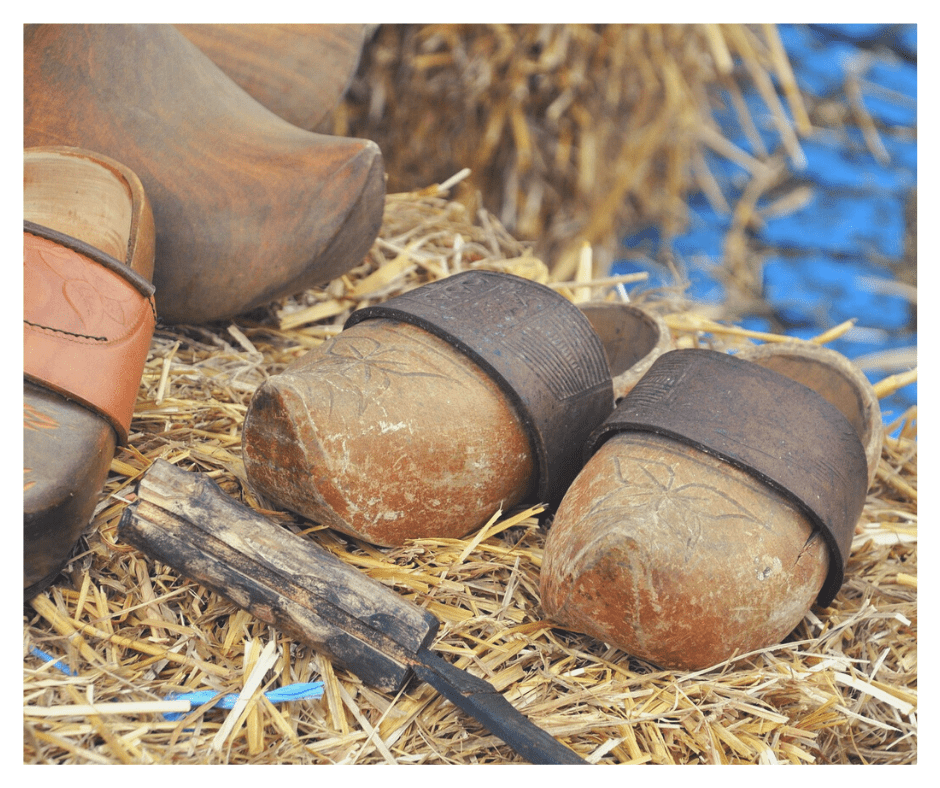
Have you ever wondered why we actually wear shoes? How did it all start? If walking barefoot is healthy and natural and safe – how did we end up with shoes that hinder the proper development of our feet? We will try to bring you closer to this story.
First footwear
It is not difficult to guess what the first footwear looked like. Simply a piece of leather from some animal tied with a braid of grass to the foot and filled with hay. Such footwear fulfilled its function: protection from the cold, sharp stones, thorns digging into the soles of the feet or the ground hot from the sun. In the Neolithic period (some 5,000 years ago), such shoes were used during numerous expeditions in search of food or shelter.
The oldest depictions of shoes date from around 2000 BC. They are wall paintings in Egyptian tombs and depict sandals made of papyrus. In ancient Greece, sandals made of leather or suitably crafted palm leaves were worn on a thick sole of cork and wood. Around 1600 BC, the first moccasins were worn in ancient Babylonia. The right shoe and the left shoe looked the same – it may be hard to believe, but this was the case until the first half of the 17th century. More about that in a moment.
In the 5th century BC, the first shoes with a high upper were developed. They were used by hunters and pilgrims who travelled long distances and needed extra protection for their lower legs. The winter uppers were lined with fur. Peasants, on the other hand, wore boots with cowhide soles, tied with a thong around the calves.

Booming shoe crafts
Over the centuries, shoes were gradually changed and improved, but the heyday of the subject did not come until the Middle Ages, when all bare feet were condemned. It was then that boots, half-shoes, slippers, clogs and other types of footwear – some of which are still known today – were developed. They were made of cow, lamb or sheepskin and were decorated with a variety of buckles, clasps and ornaments. At the time, there was no concern for comfort or foot protection, but rather for extravagance and excellent workmanship.
Modern times – women’s shoes, men’s shoes
In the 14th century, shoes with a pointed toe (court shoes and peasant clogs) were popular; and in the 17th century, shoe evils, or heels, were invented. They were a sign of high social status. They were worn by both men and women. Ankle boots were also a fashionable type of men’s footwear at the time.
In 1772, there was a change in belief among the upper classes, which led to the withdrawal of heels from court fashion. Silk was once again replaced by leather, which was more comfortable and more accessible. The focus was again on comfort and shoes were created that were wider in their front part.
(Could this have been the beginning of barefoot shoes? Maybe. But the material of 18th-century shoes was too hard and heavy to be considered the first minimalist shoes. These would come into being much later.)
In the 1860s, the curse for feet returned. The fashion of the time again relies on heels to slenderise the silhouettes of women wearing short skirts. Unfortunately, this type of footwear is still in place today, deforming the feet of thousands of people all over the world.
Footwear production – handmade shoes
The shoemaking craft is one of the oldest. Until the 19th century, shoes were made exclusively by hand and a new pair could only be ordered from a shoemaker’s workshop.
A variety of tools were used to make shoes, which also improved over the years, and it often took a whole day to make a pair of shoes. In 1845, the first rolling machine was developed, replacing the anvil and hammer. The next advance came with the invention of the pegging machine, which was used to join the sole to the upper. Both of these inventions significantly reduced the time it took to produce footwear.
Thanks in part to this, the early years of the 20th century saw a real boom in the history of footwear. New designs, models, trends and accessories were created. As many as 1,200 pairs of shoes can now be produced in just 8 hours!
Today, however, consumers increasingly appreciate handmade shoes. Things produced with passion, by human hands, are gaining more and more value on the market. They are unique, have a soul and are often characterised by perfect workmanship. Many small companies rely on this type of production. If you are looking for comfortable, healthy, handmade shoes, take a look at Magical Shoes. If the topic of shoe history – styles, fashions and phases of shoe perfection throughout history – has interested you and you want to explore this knowledge further, there are several museums around the world (there are probably online exhibitions too) that you can visit for this purpose. One of the largest (over 10,000 pairs of shoes) is the Bata Museum in Toronto.
Sources:

Leave a Reply